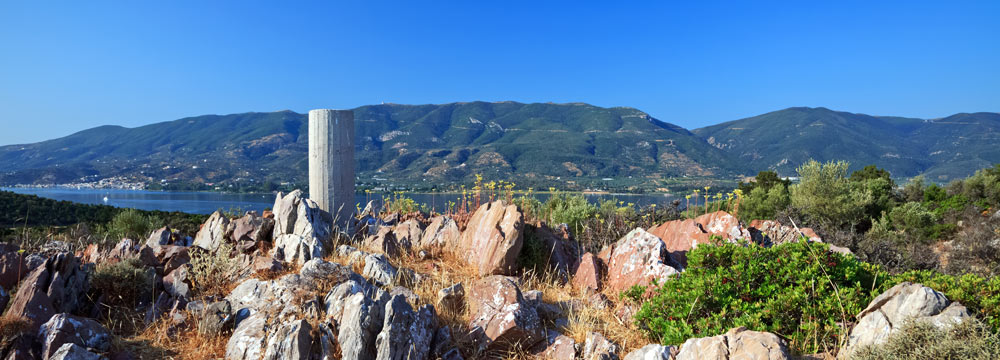The word “Poros” in ancient Greek means a small sea passage. Nothing could describe better the island of Poros, since the closest distance between the island and the coast of the Peloponnese is 200 m. So, Poros is the island that is separated from the Peloponnese by a small strip of sea.
The island was also mentioned in ancient texts as “Erini”, which means peace in Greek, probably because there was peace after the Dorian invasion and the fall of the Mycenian dominance.
Poros was divided in two islands during the antiquity: the one was called Sfairia and is the part of the island where today is located the island’s capital; the other was called Kalavria and is the bigger part of Poros at the north of Poros Town.
During the Mycenaean dominance (1,400-1,100 B.C.) Kalavria was quite powerful as the most important naval base of the wider region was located on islet Monti or Liontari in the eastern coast of Poros.
In the 7th century B.C., it is believed that Kalavria was part of an “amphictyonia”; that is an alliance between multiple City-states. The amphictyonia was named “Amphictionia of Kalavria” and its members were Athens, Poros, Aegina, Epidaurus, Hermione, Trizina, Nafplio, Orchomenos and Prasies.
During the 5th century, the Persians started attacking the Greek territories along with the Aegean islands. With the beginning of the Peloponnesian War, which also affected the islands of the Argosaronic Gulf, Trizina and Kalavria offered asylum to the anti-Macedonian politician who eventually became the tyrant of the region.
After the death of Alexander the Great in 323 B.C., the Ptolemies of Egypt occupied Kalavria. Around that time, the famous orator Demosthenes came to the island and some say that this is the place where he committed suicide.
In 273 B.C., the last explosion of the Methana volcano dramatically changed the morphology of Poros and the wider region.
In the Byzantine Times, the pirates that dominated the Aegean Sea attacked the island multiple times.
In the beginning of the 20th century, among the activities of the Poros’ inhabitants are agriculture (mainly wheat, grapevines and olives), livestock, fishing and shipping.
After the 1950s tourism gets in the picture and in the following decades Poros attracts many travelers coming from Athens. Today Poros is a top touristic destination in Greece and certainly among the best ones near Athens. It offers many and diverse accommodation choices, gorgeous beaches, picturesque villages and a unique cosmopolitan flair of another era.








 BACK TO LIST
BACK TO LIST